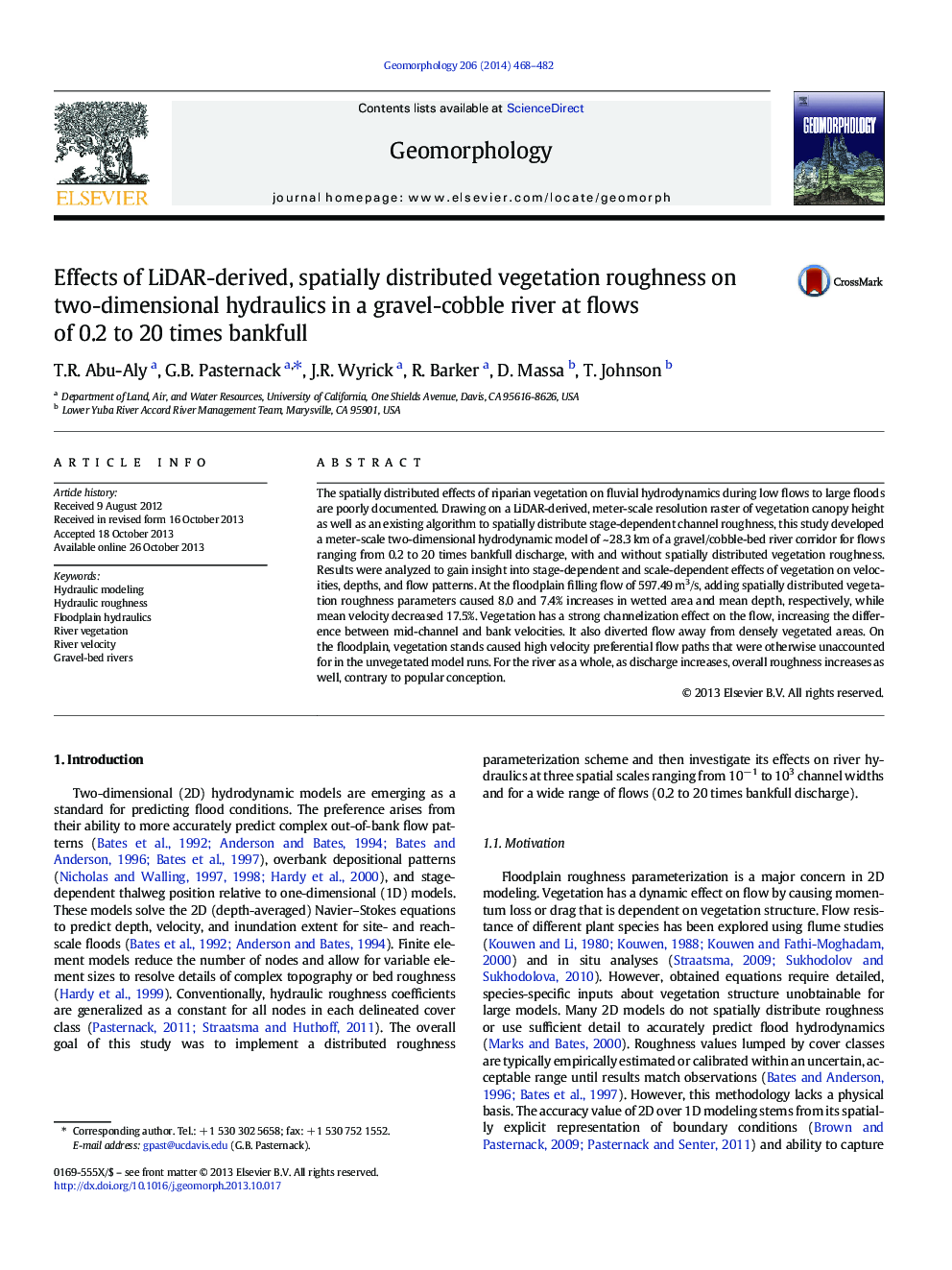| Article ID | Journal | Published Year | Pages | File Type |
|---|---|---|---|---|
| 4684676 | Geomorphology | 2014 | 15 Pages |
•2D models can now explicitly quantify spatially distributed vegetation roughness.•Adding real vegetation patterns yields complex yet essential hydraulic patterns.•Adding vegetation increased wetted area, depth and velocity by 8, 7, and − 18%.
The spatially distributed effects of riparian vegetation on fluvial hydrodynamics during low flows to large floods are poorly documented. Drawing on a LiDAR-derived, meter-scale resolution raster of vegetation canopy height as well as an existing algorithm to spatially distribute stage-dependent channel roughness, this study developed a meter-scale two-dimensional hydrodynamic model of ~ 28.3 km of a gravel/cobble-bed river corridor for flows ranging from 0.2 to 20 times bankfull discharge, with and without spatially distributed vegetation roughness. Results were analyzed to gain insight into stage-dependent and scale-dependent effects of vegetation on velocities, depths, and flow patterns. At the floodplain filling flow of 597.49 m3/s, adding spatially distributed vegetation roughness parameters caused 8.0 and 7.4% increases in wetted area and mean depth, respectively, while mean velocity decreased 17.5%. Vegetation has a strong channelization effect on the flow, increasing the difference between mid-channel and bank velocities. It also diverted flow away from densely vegetated areas. On the floodplain, vegetation stands caused high velocity preferential flow paths that were otherwise unaccounted for in the unvegetated model runs. For the river as a whole, as discharge increases, overall roughness increases as well, contrary to popular conception.
